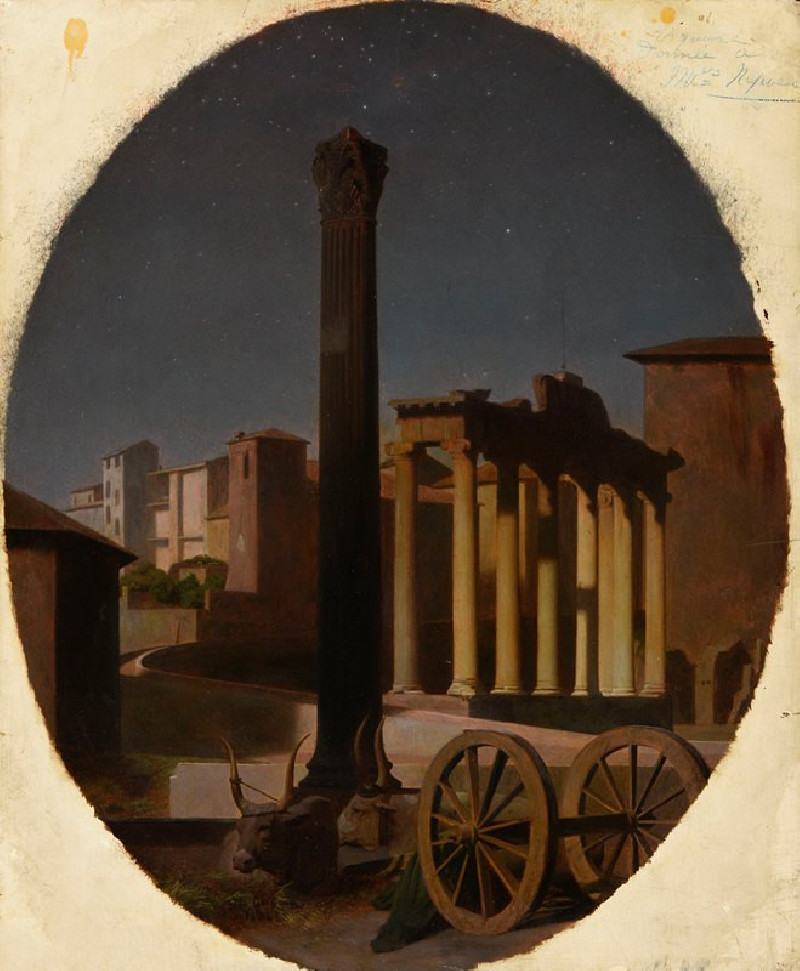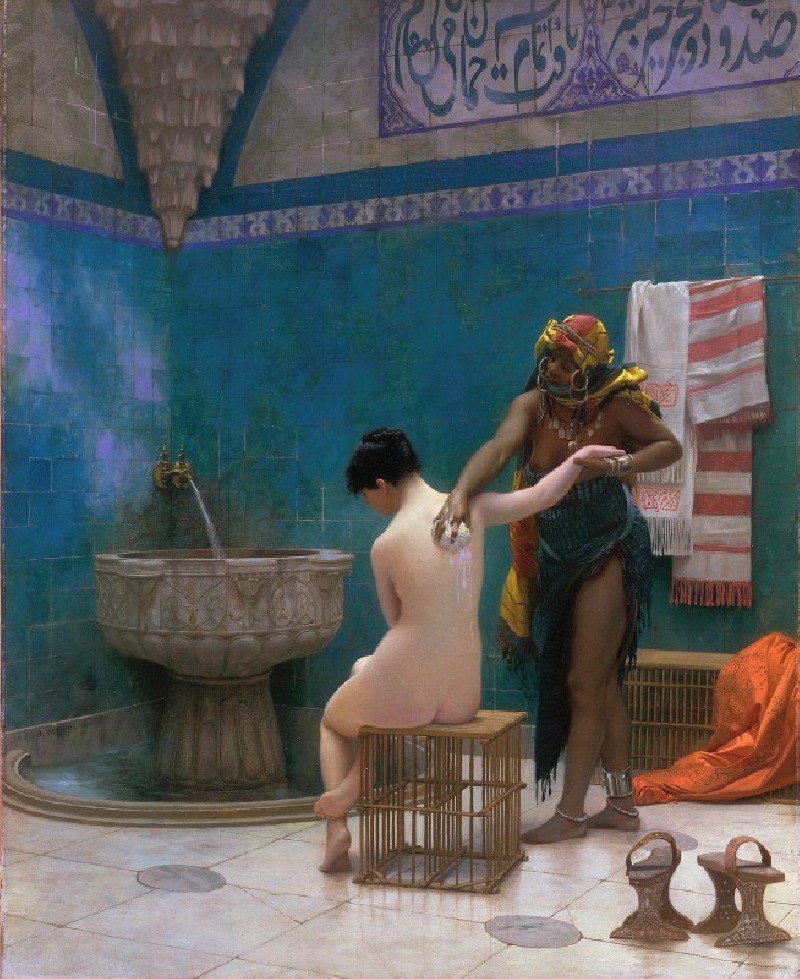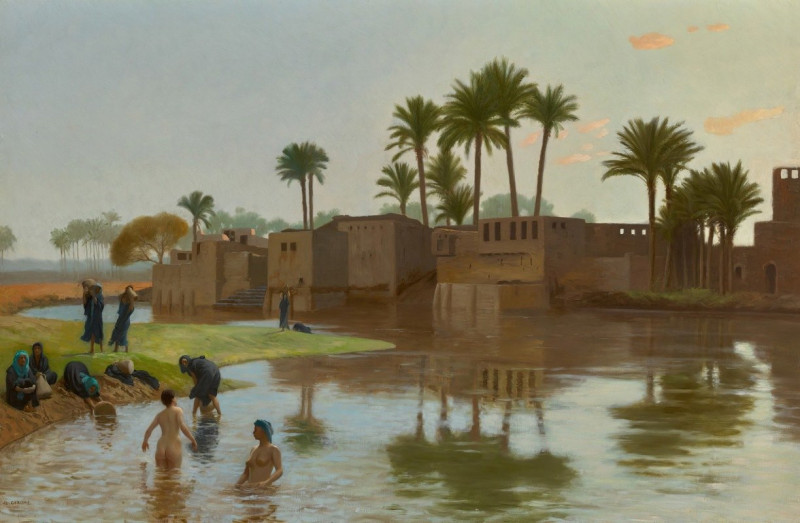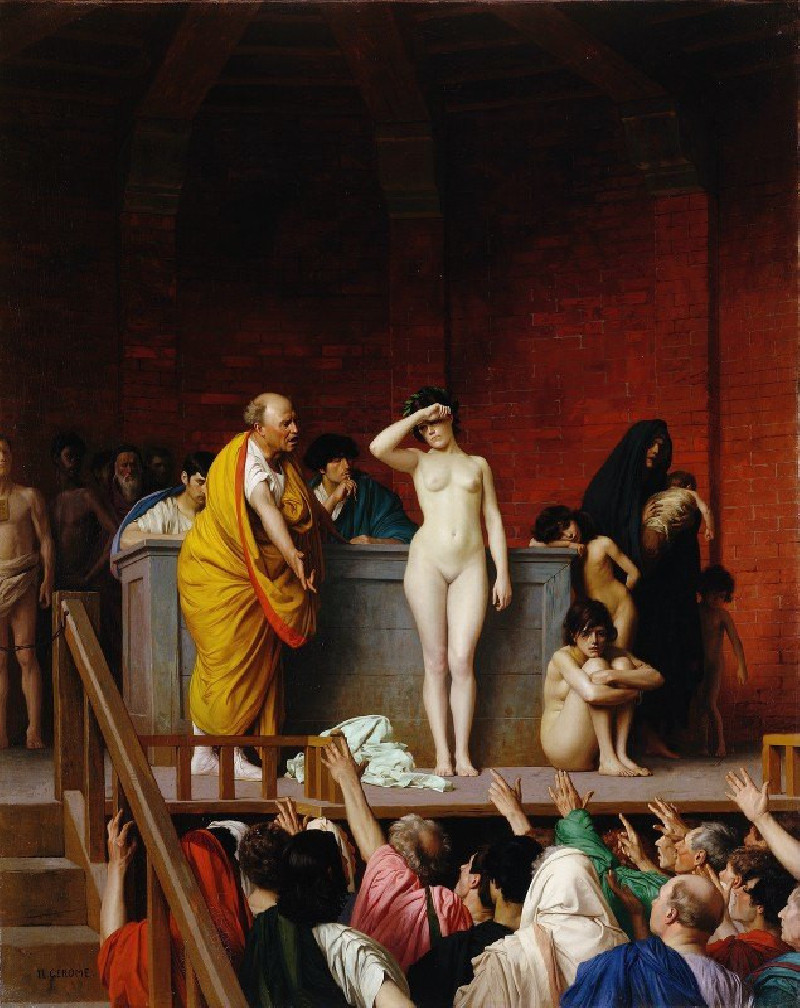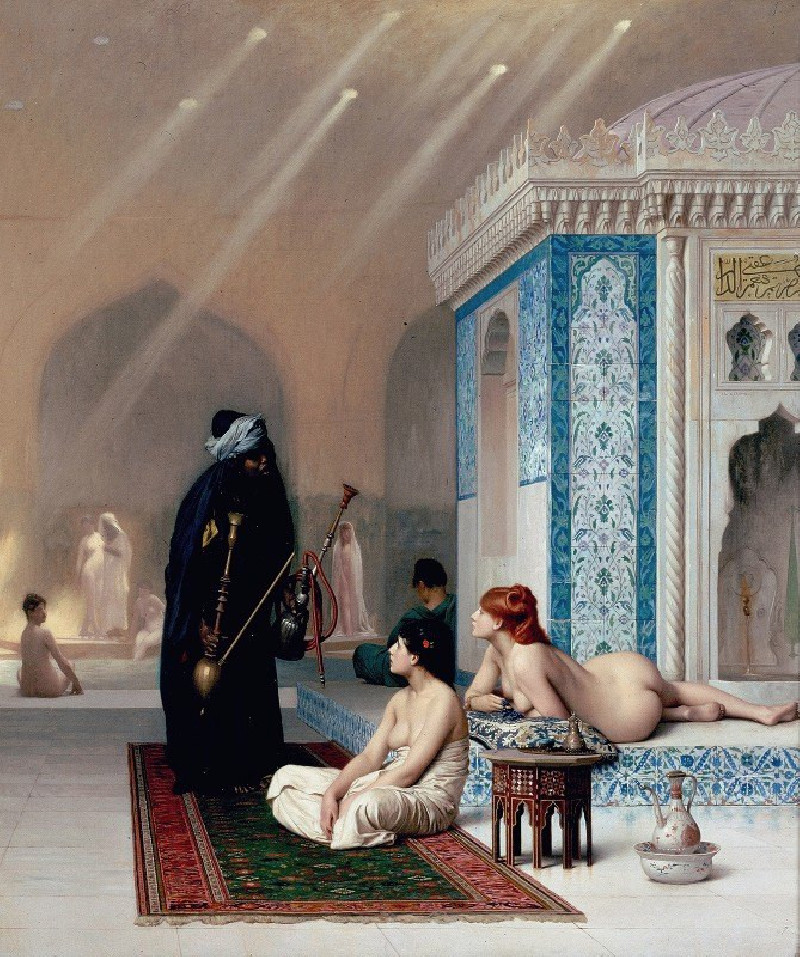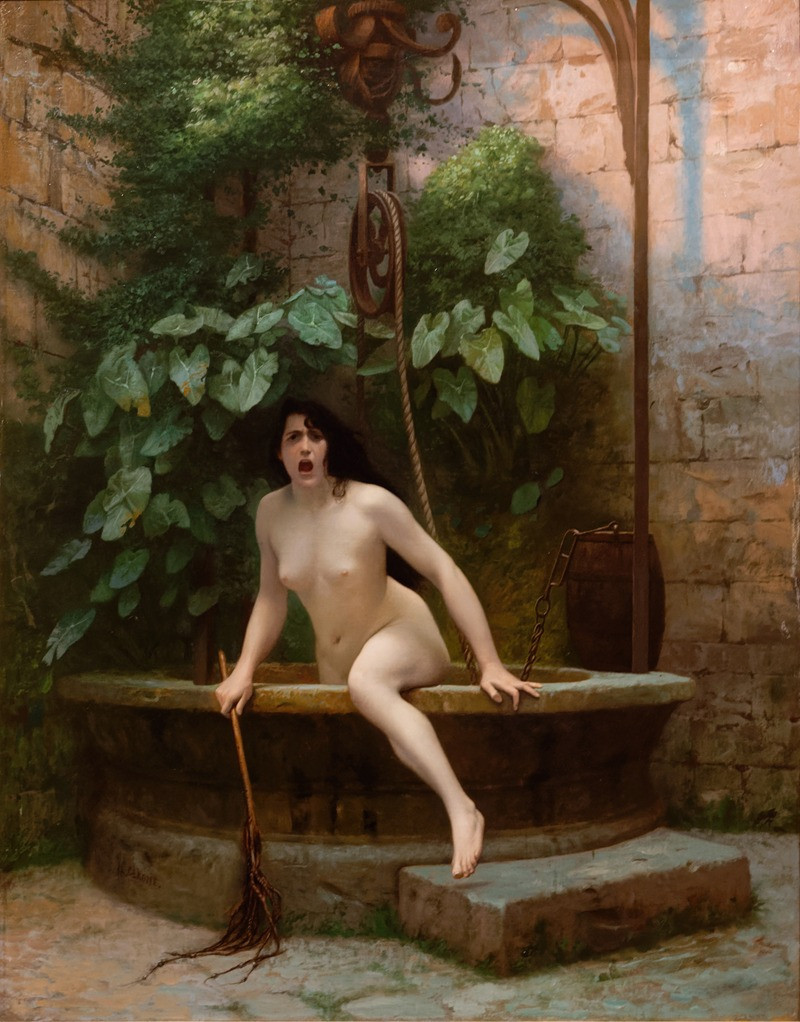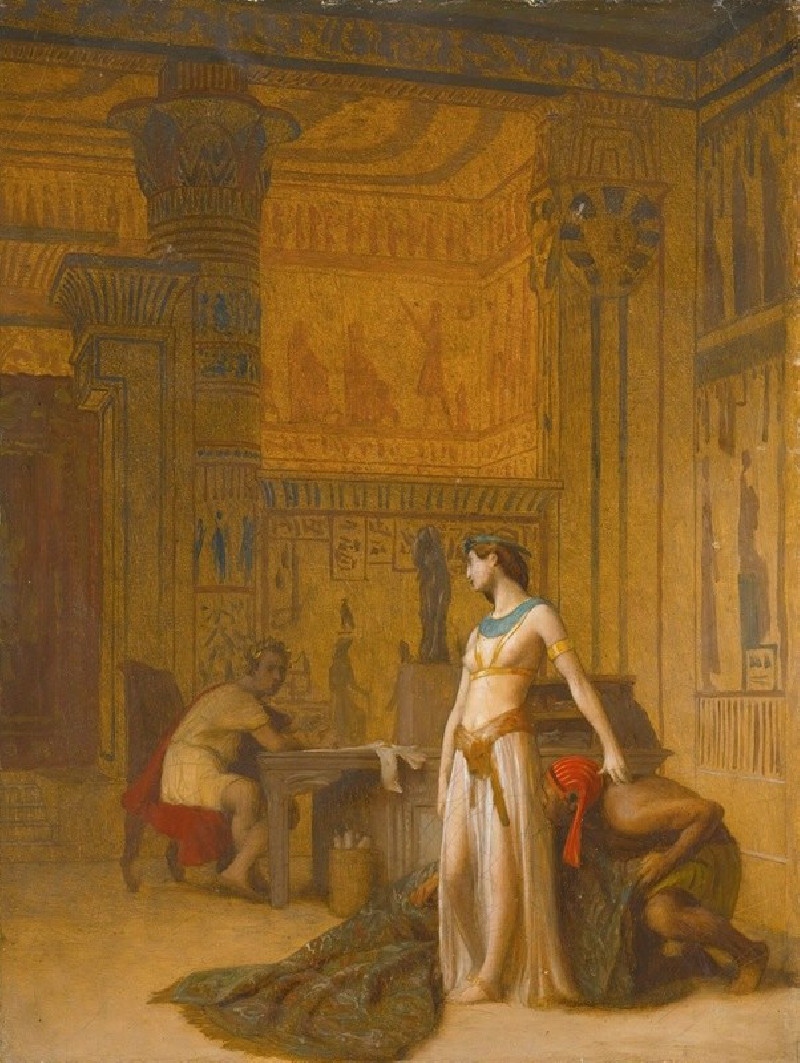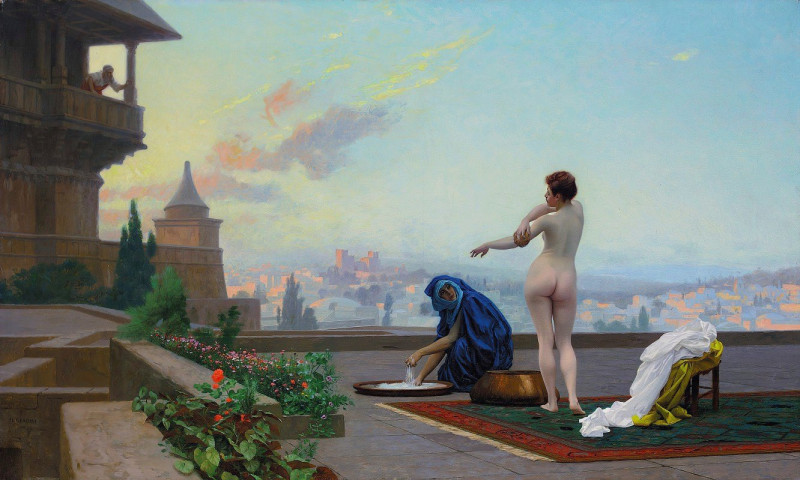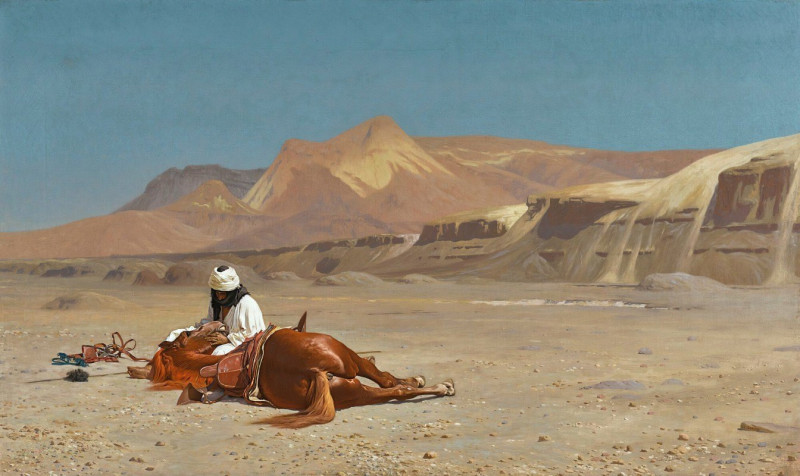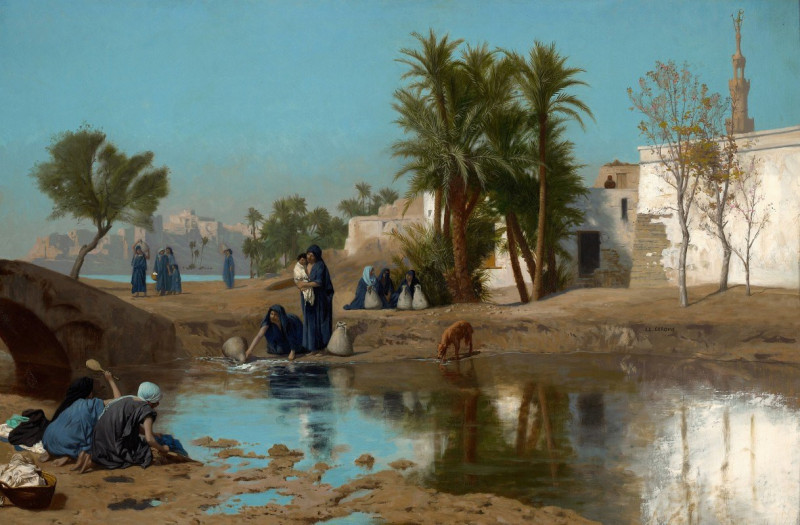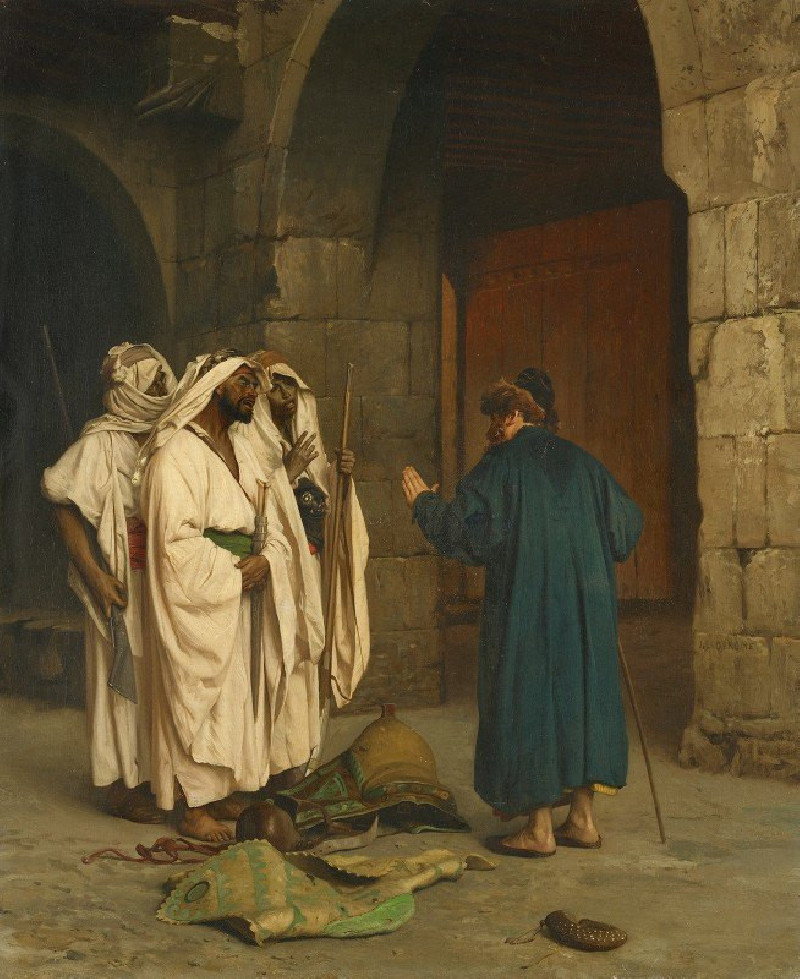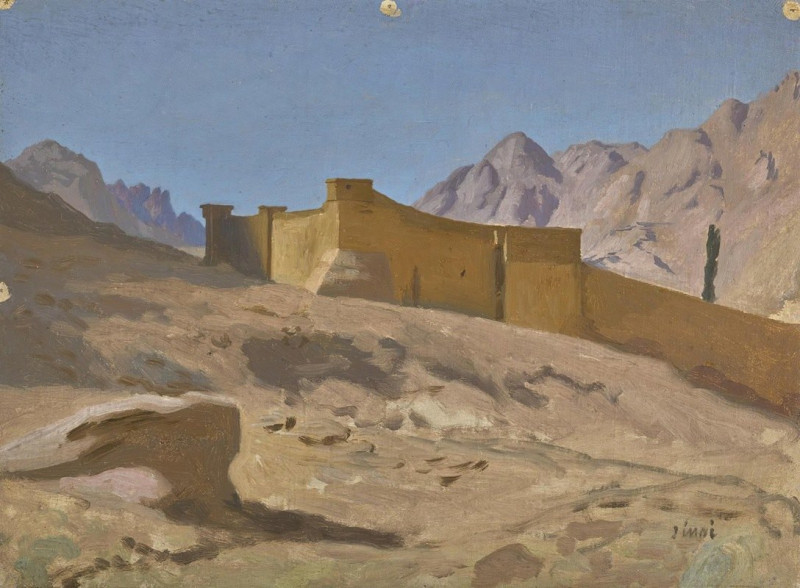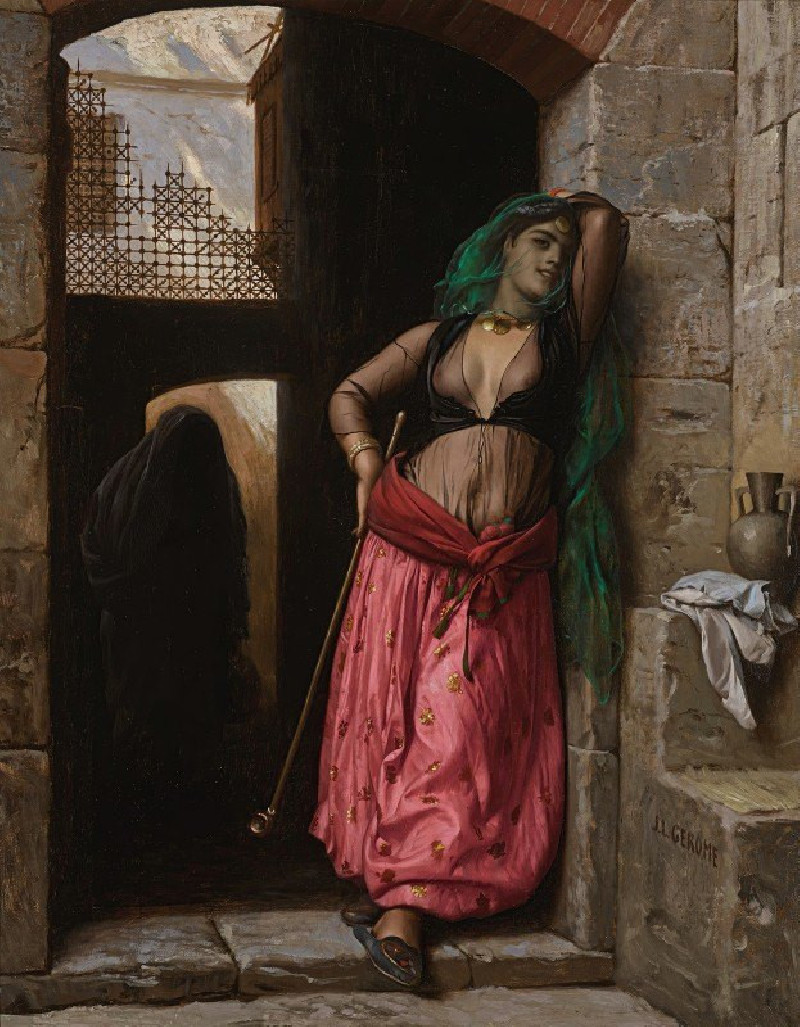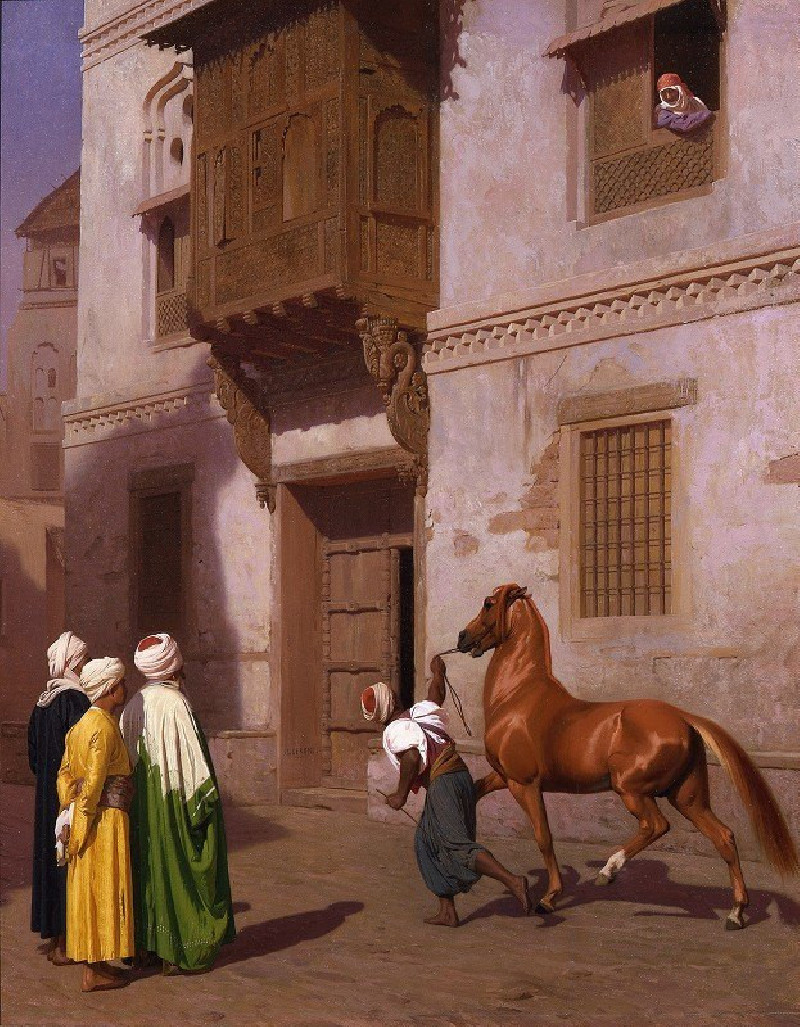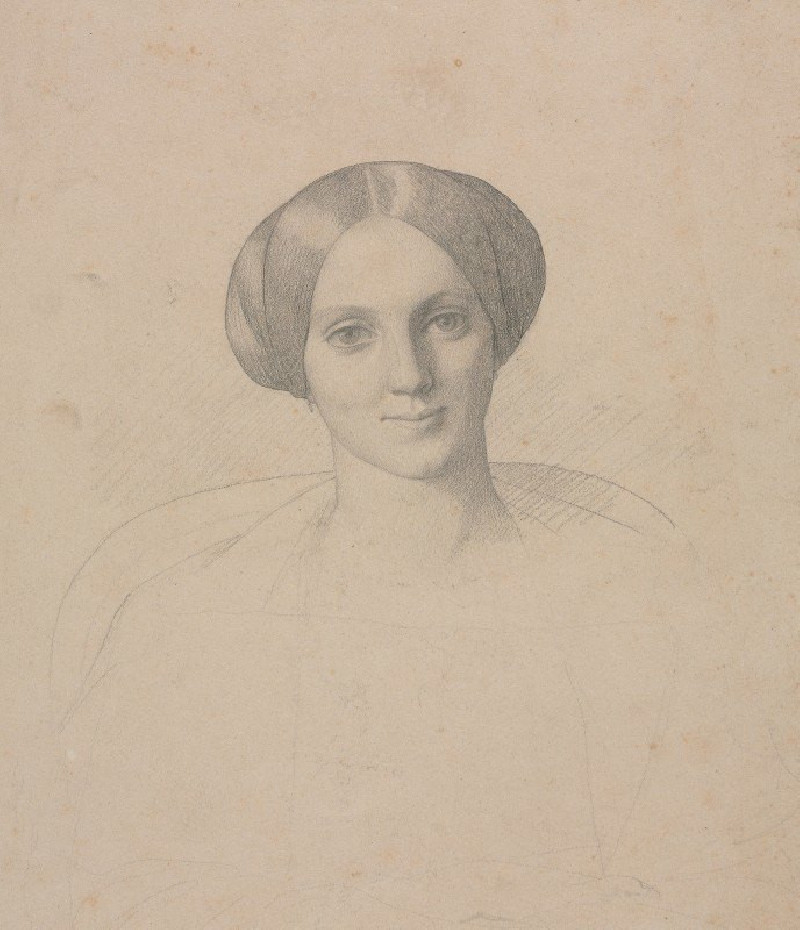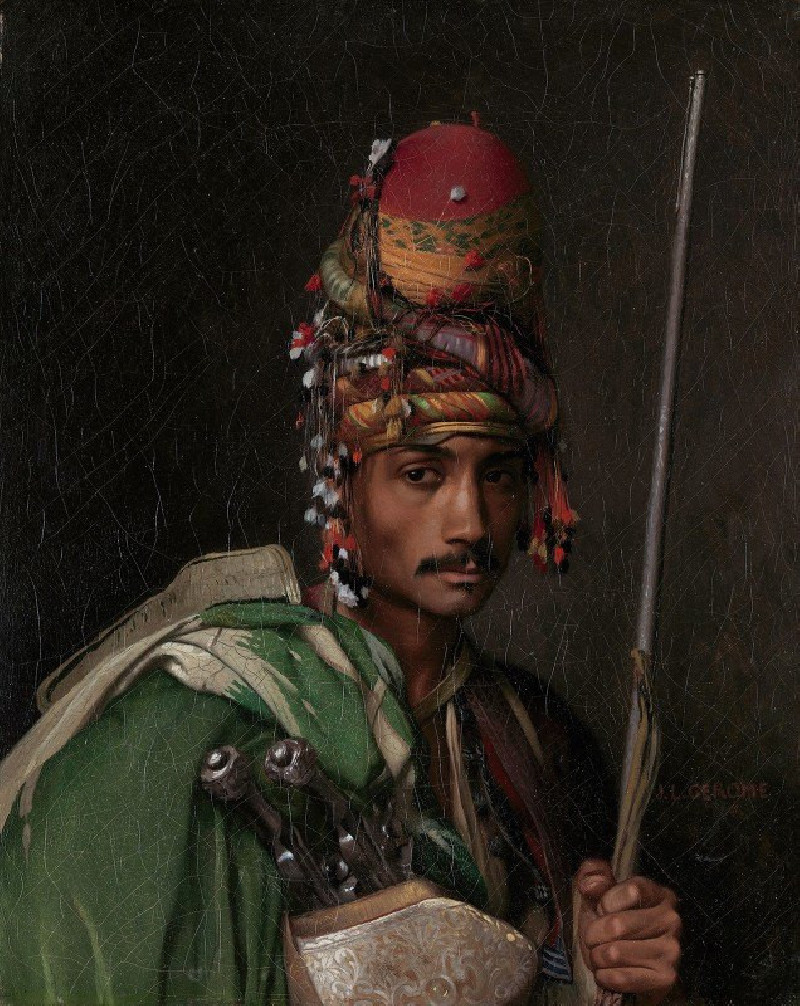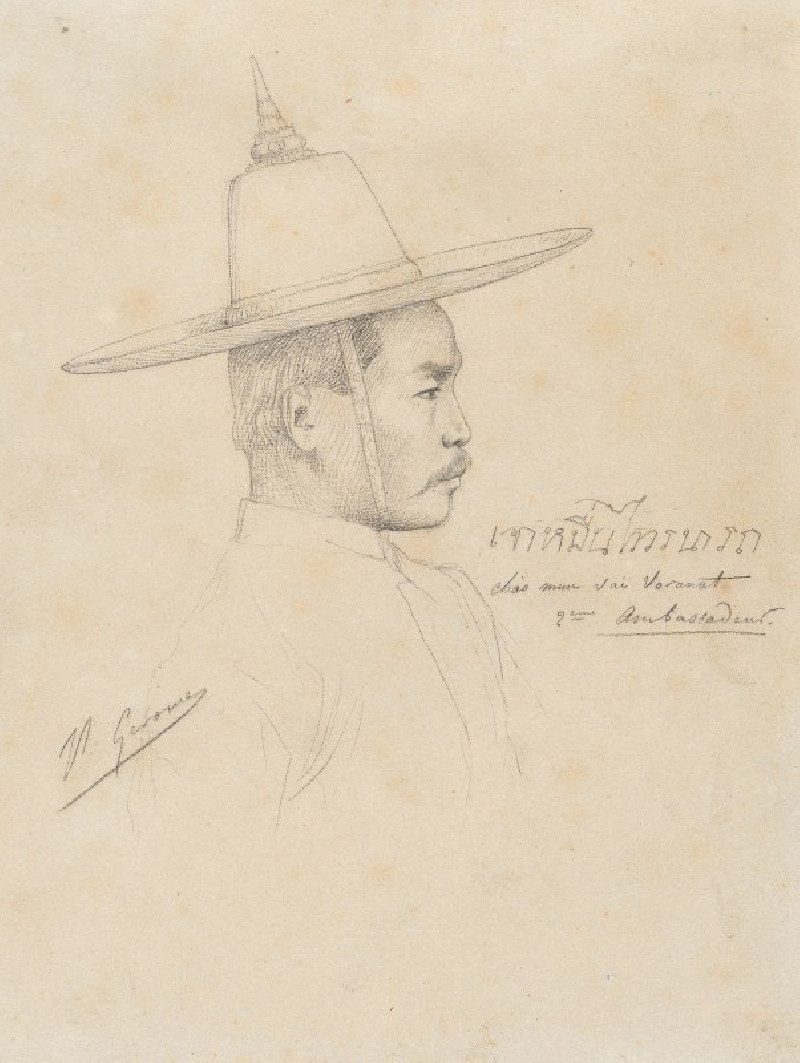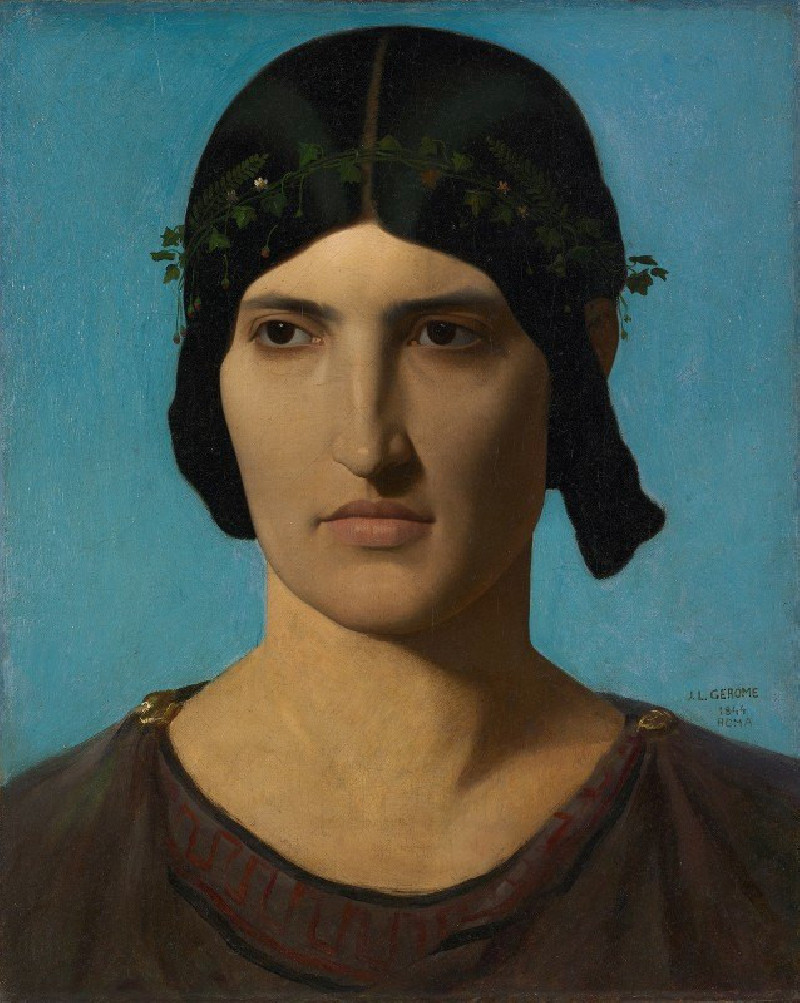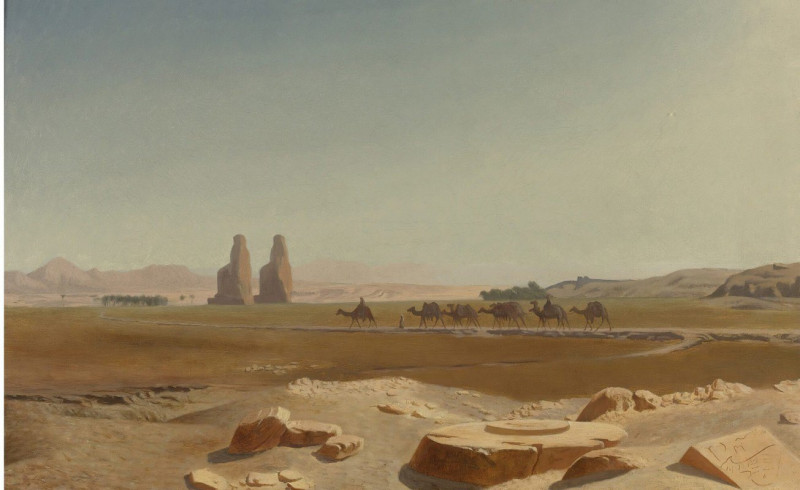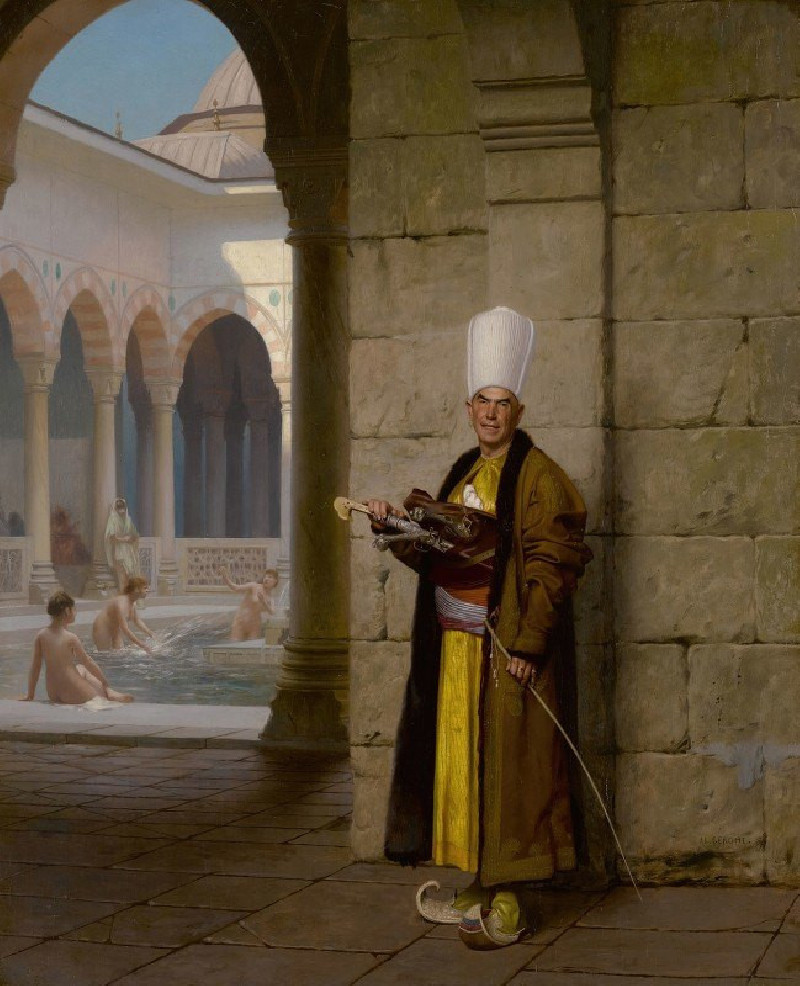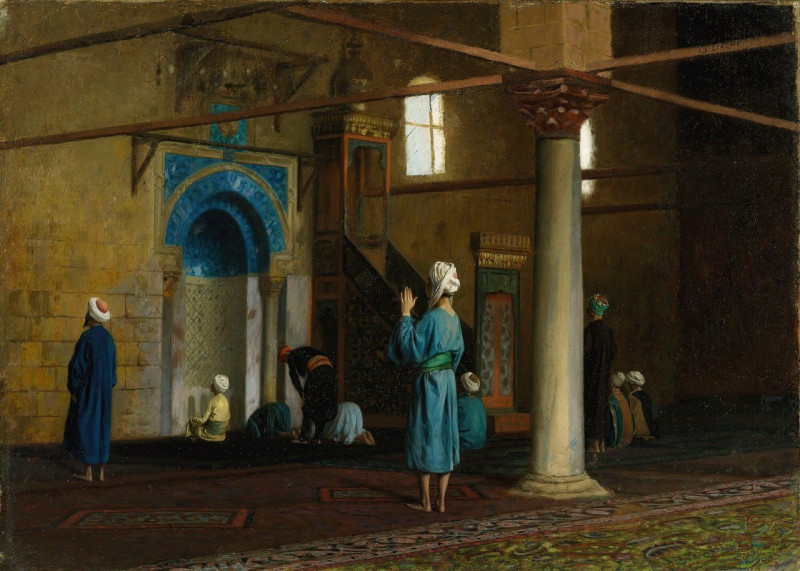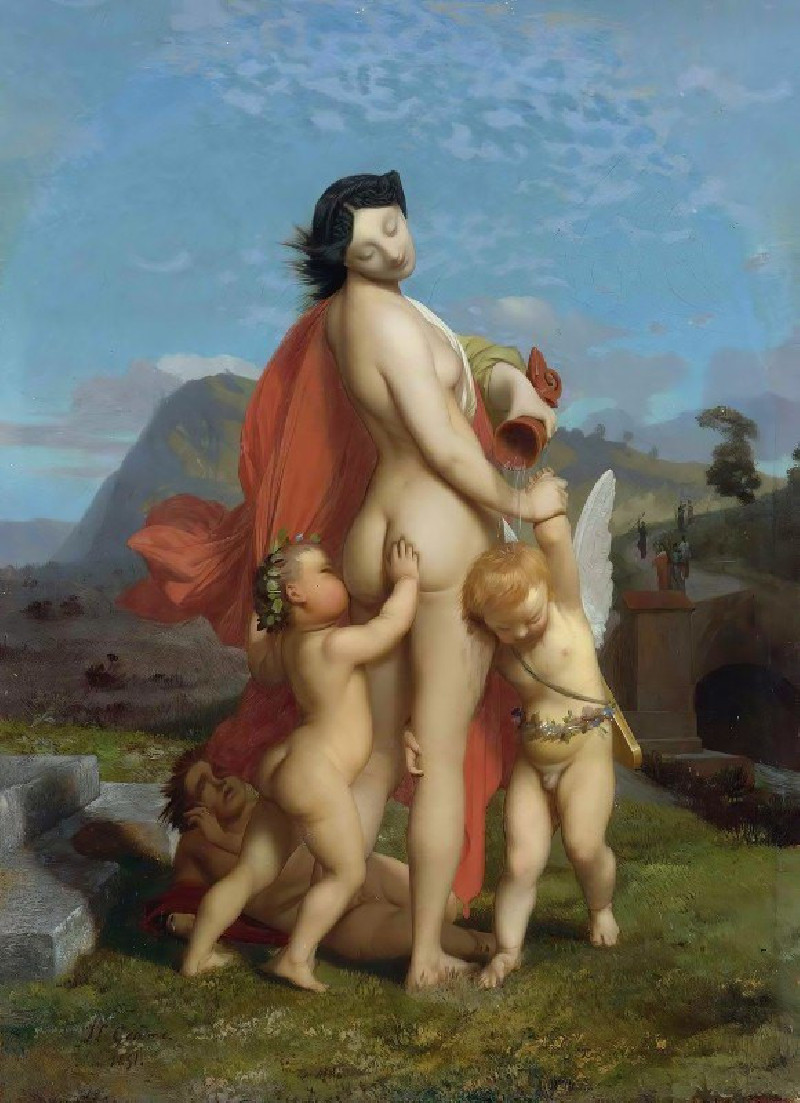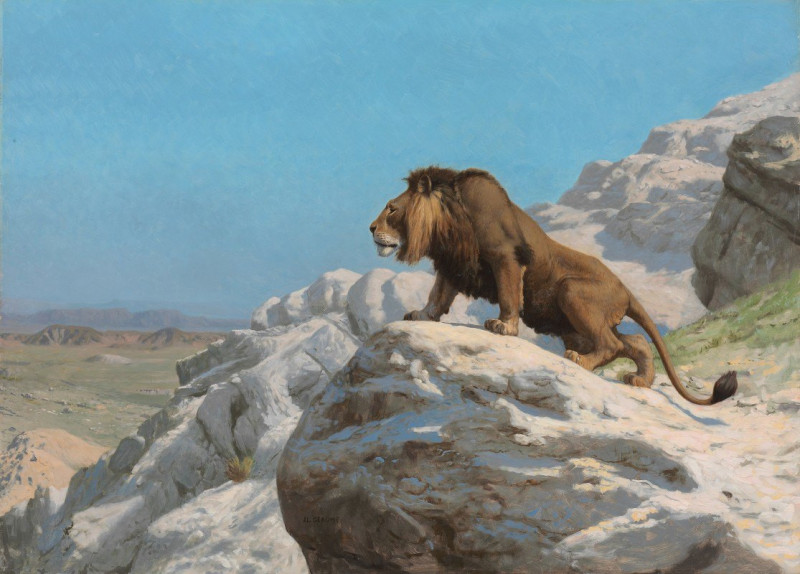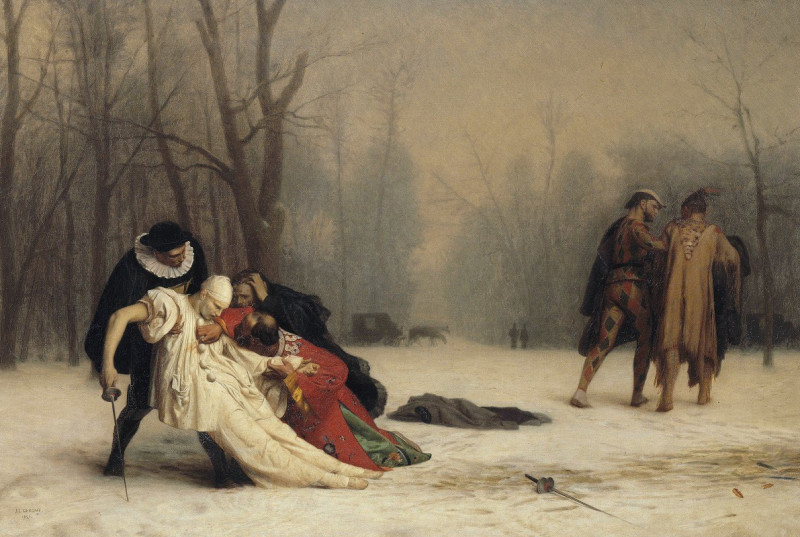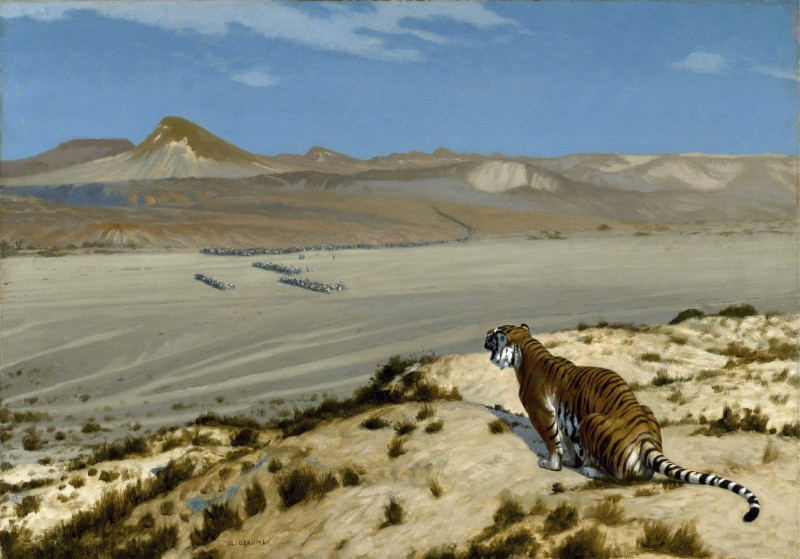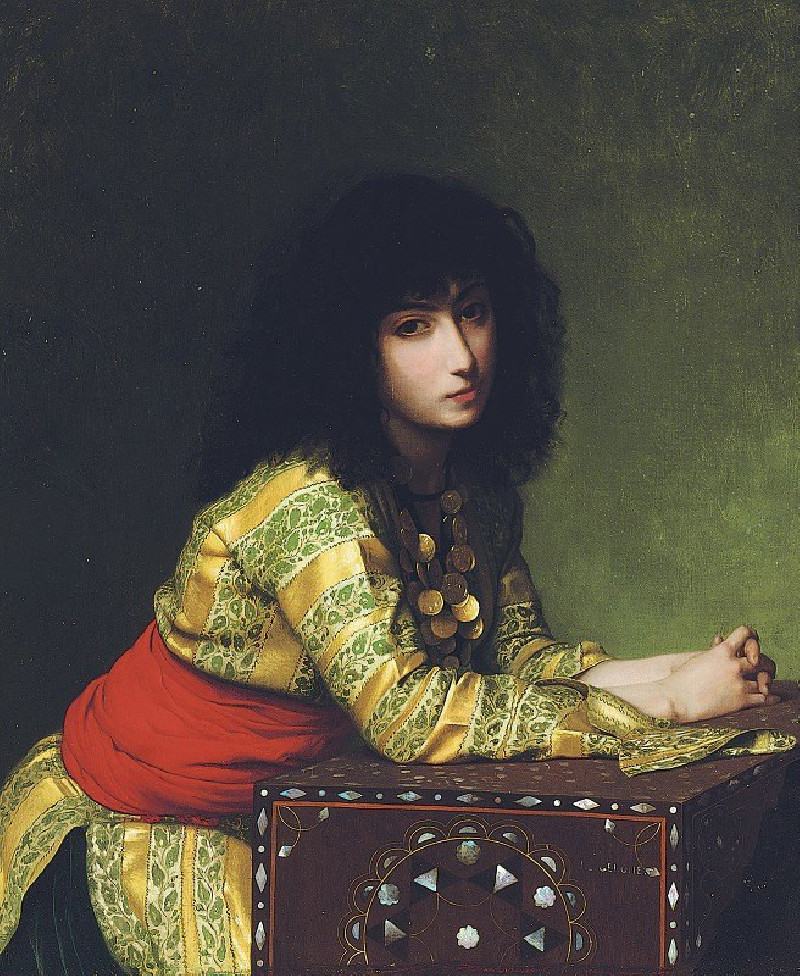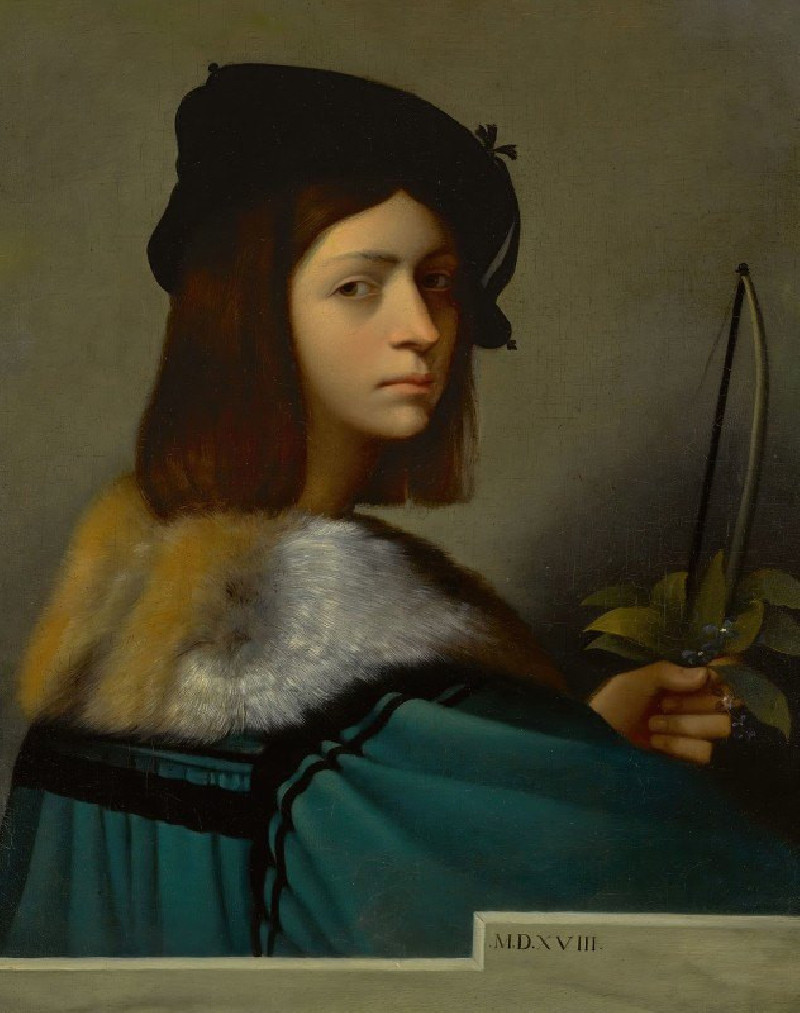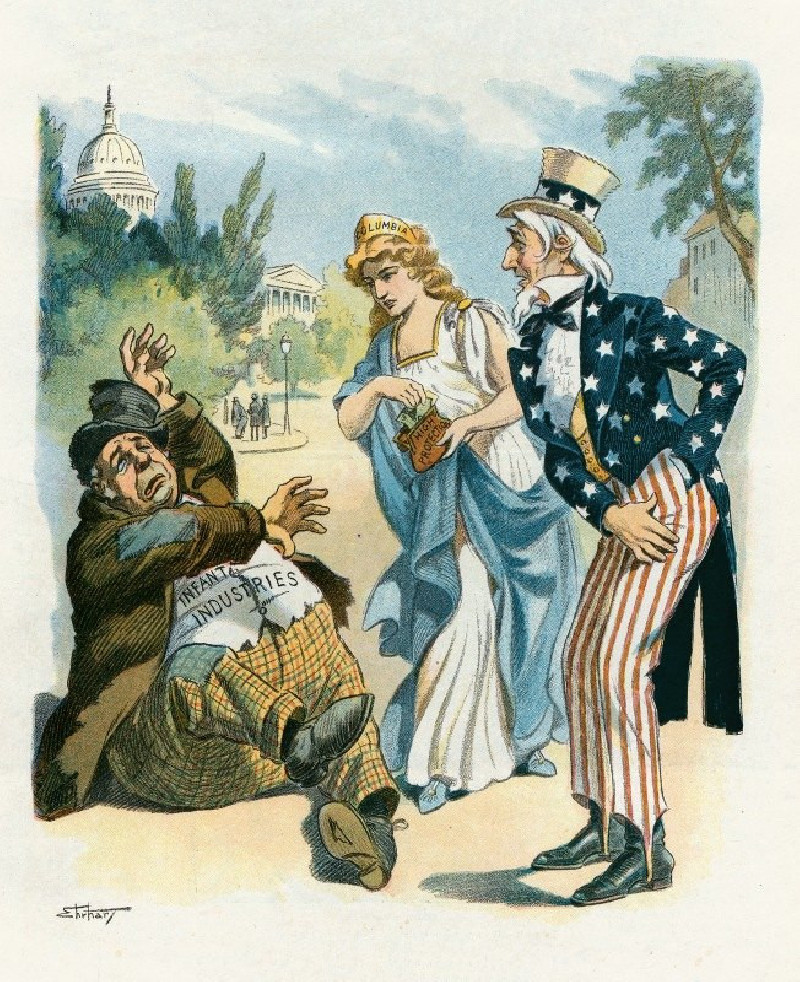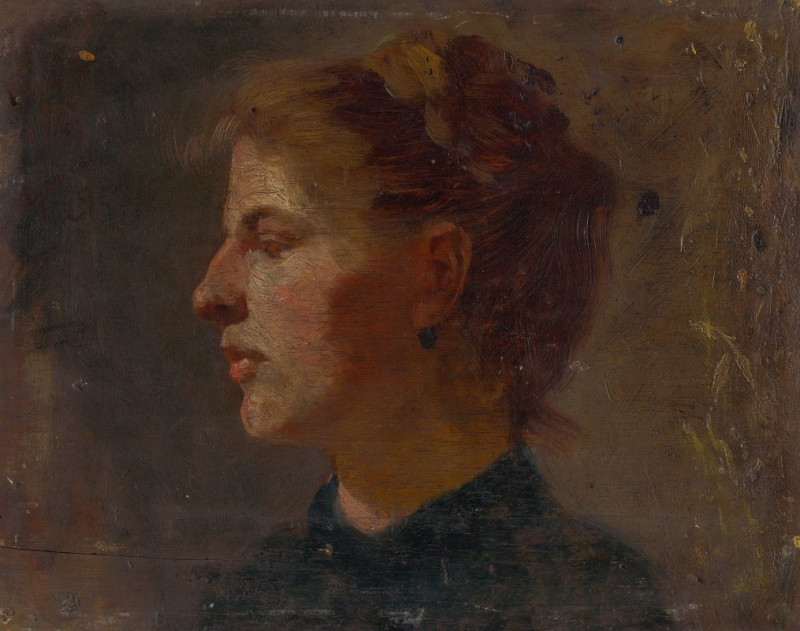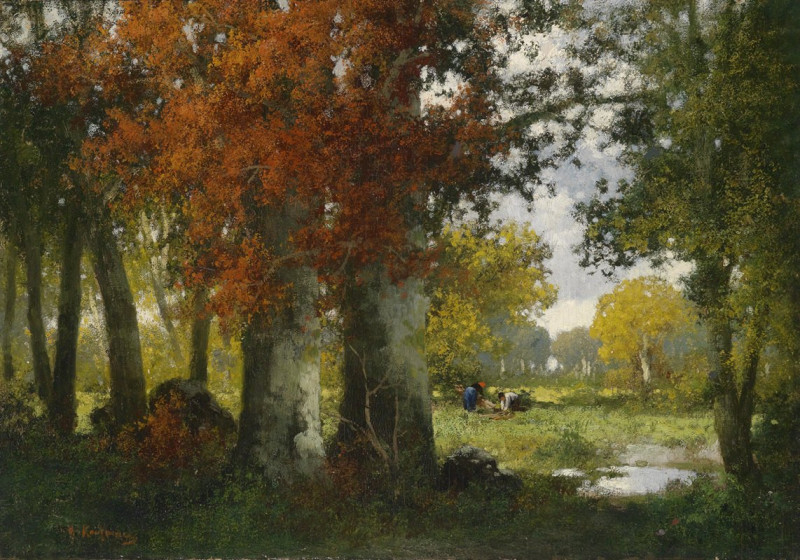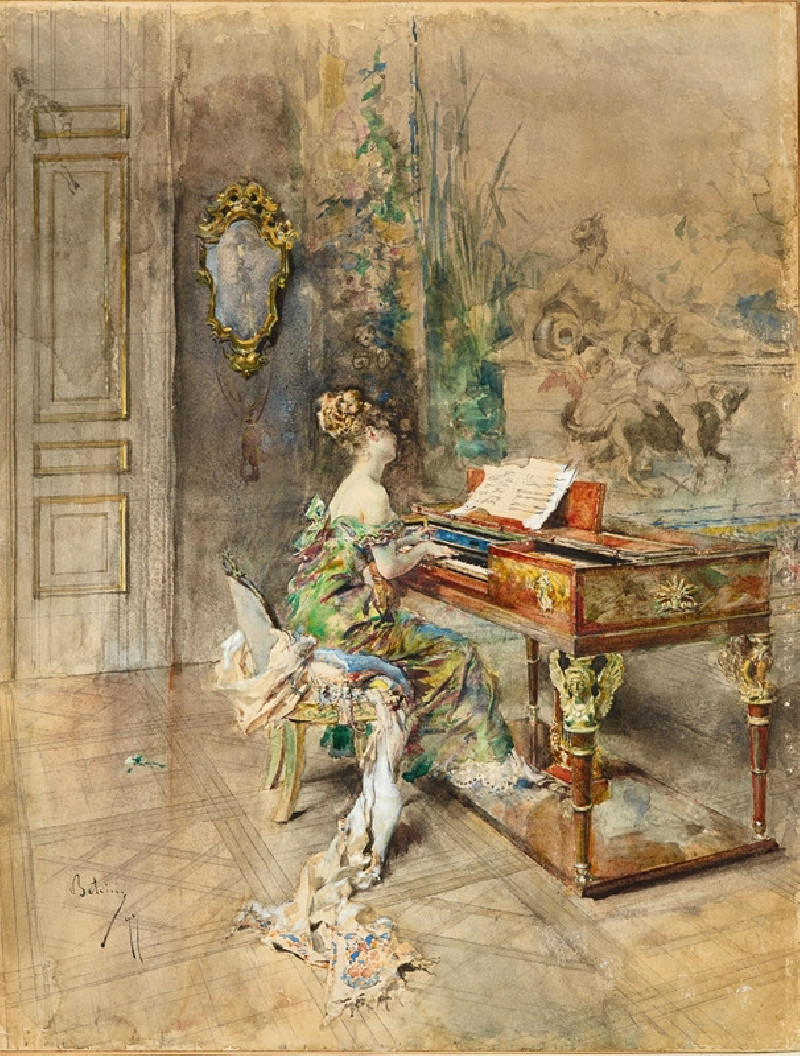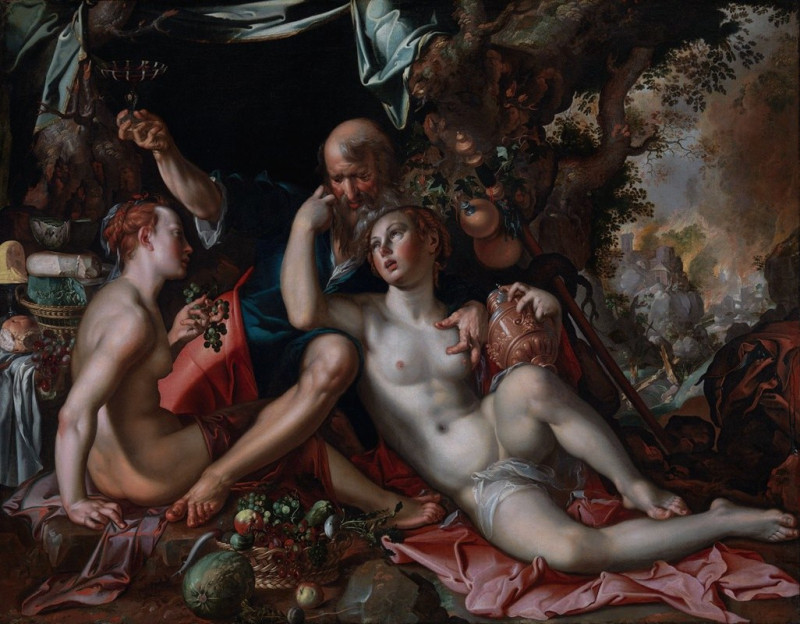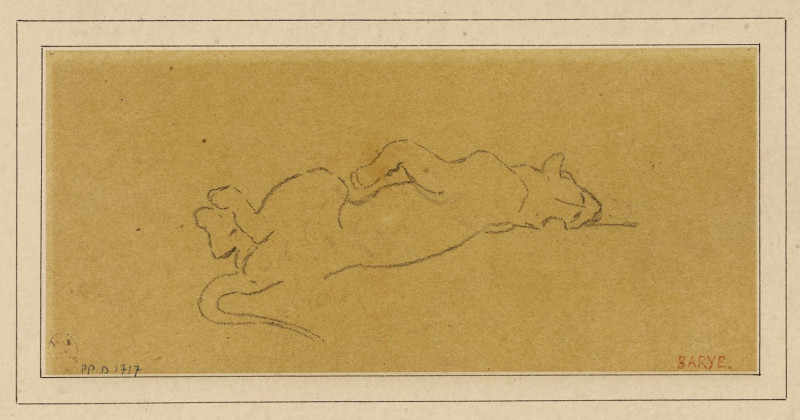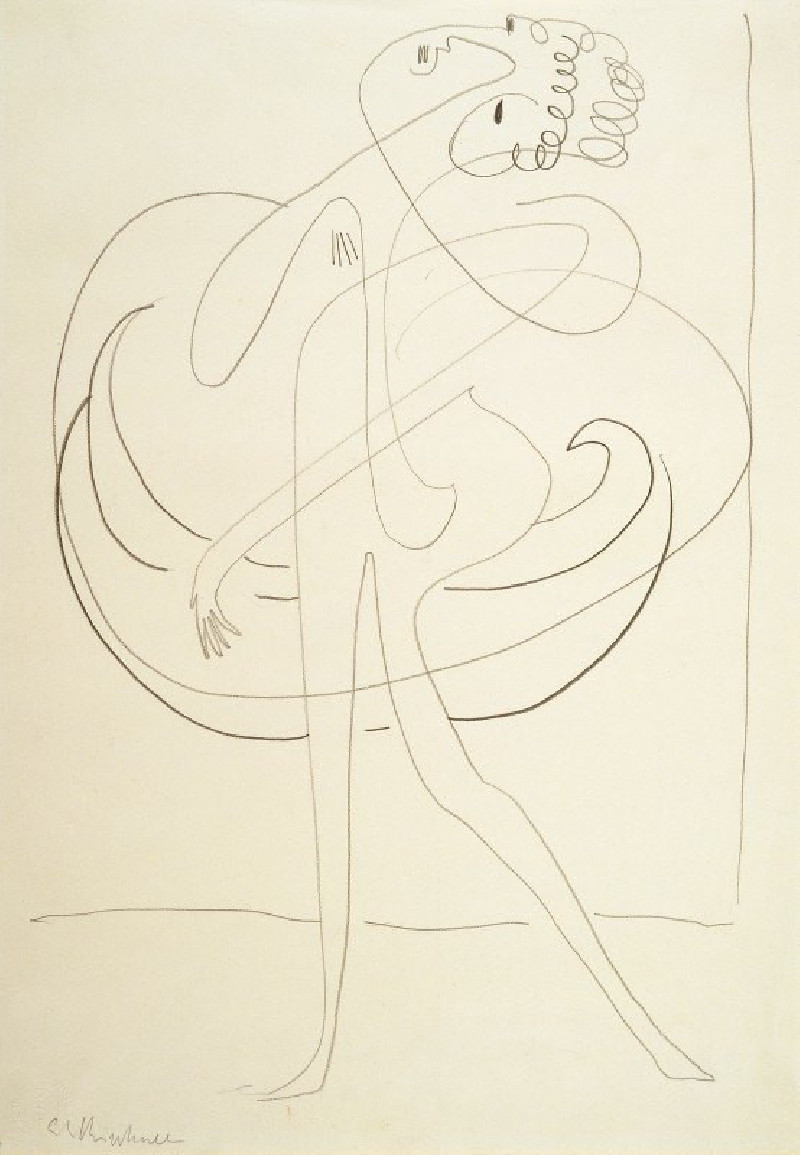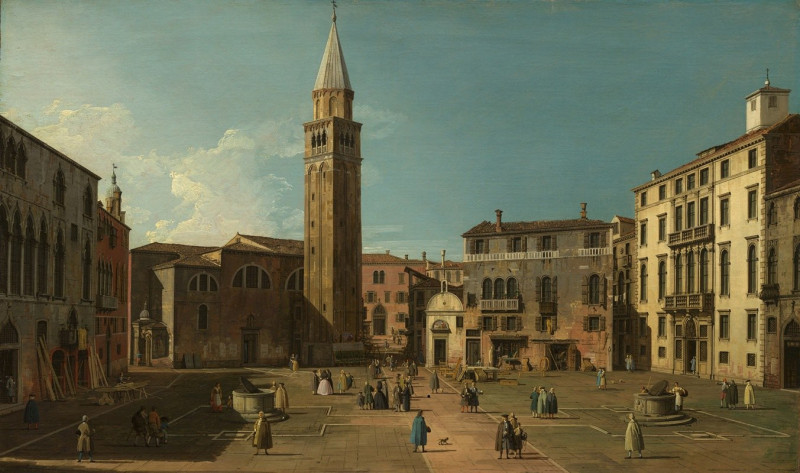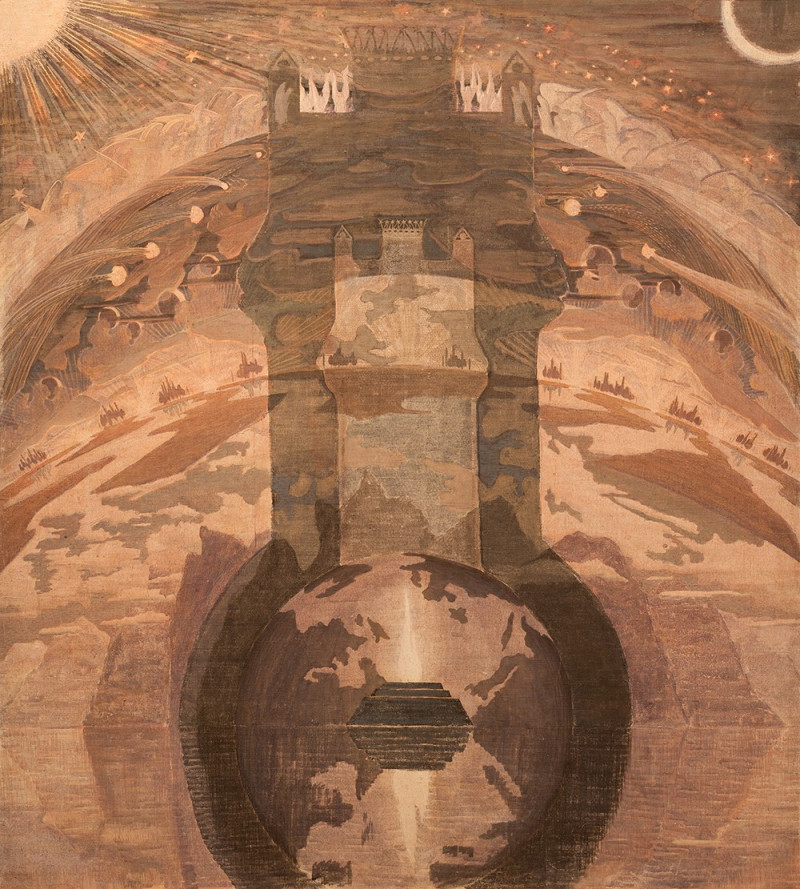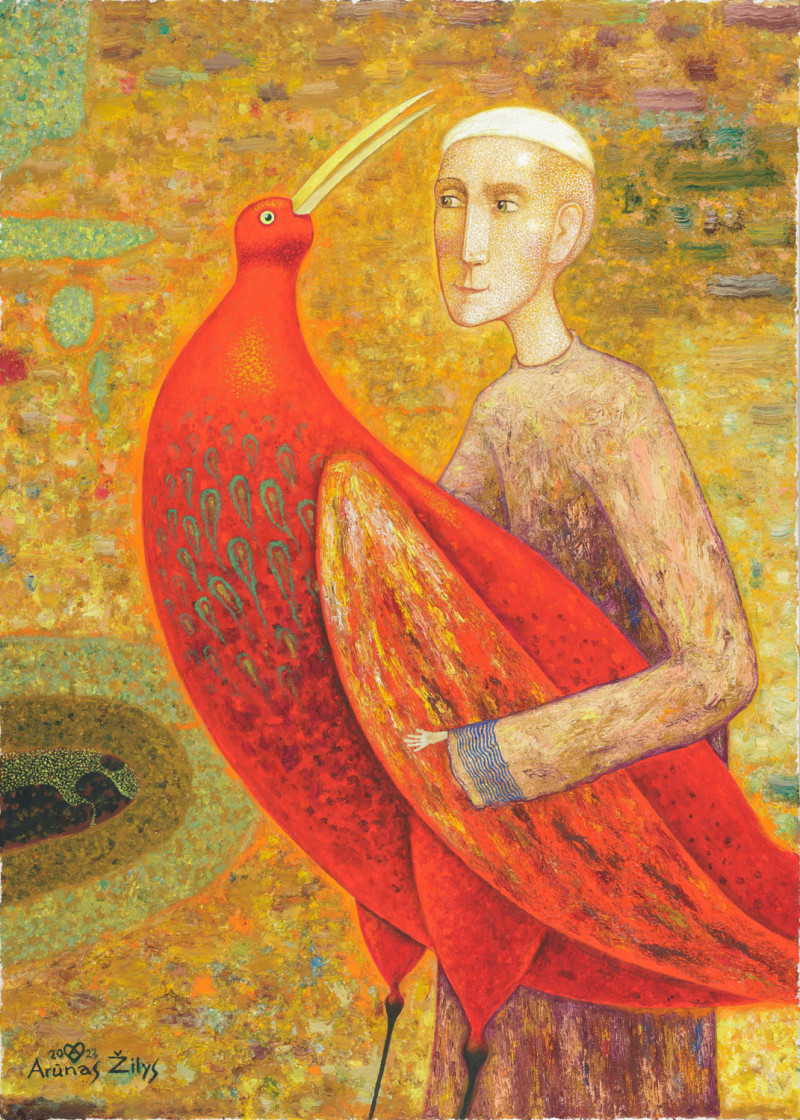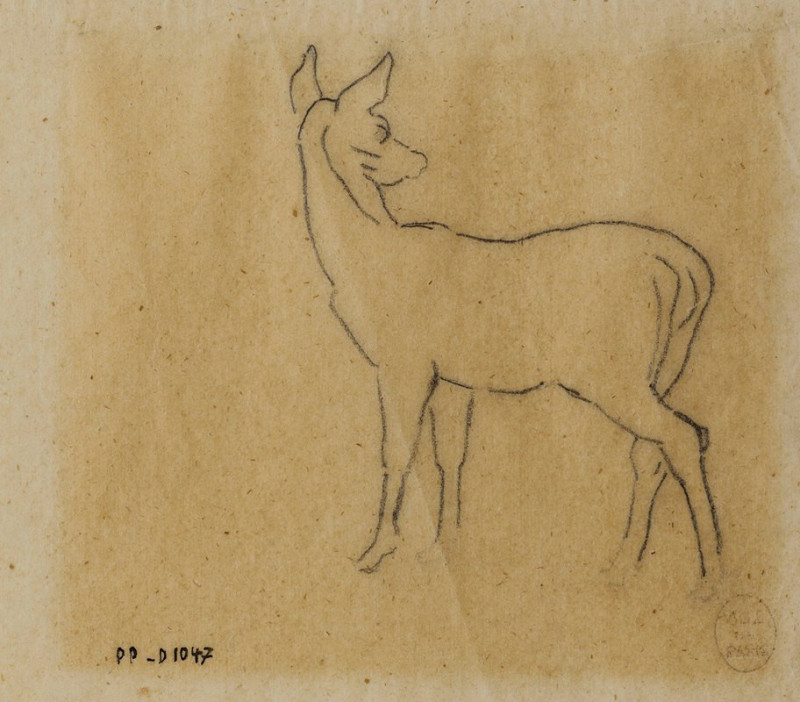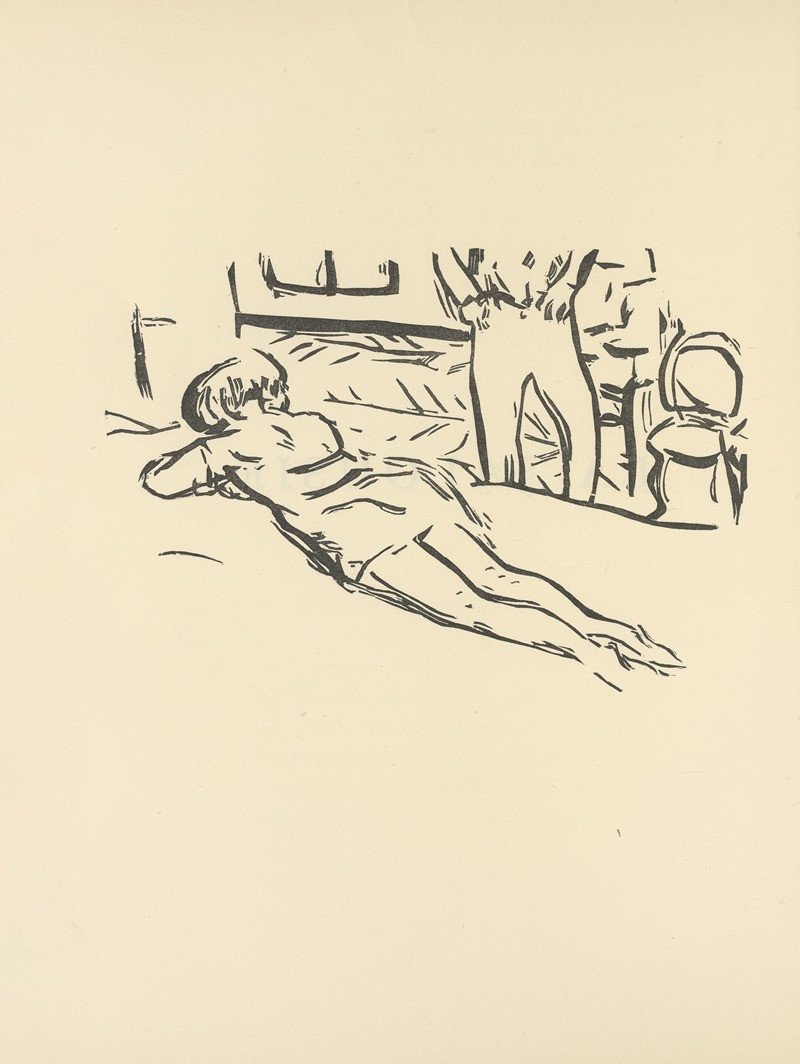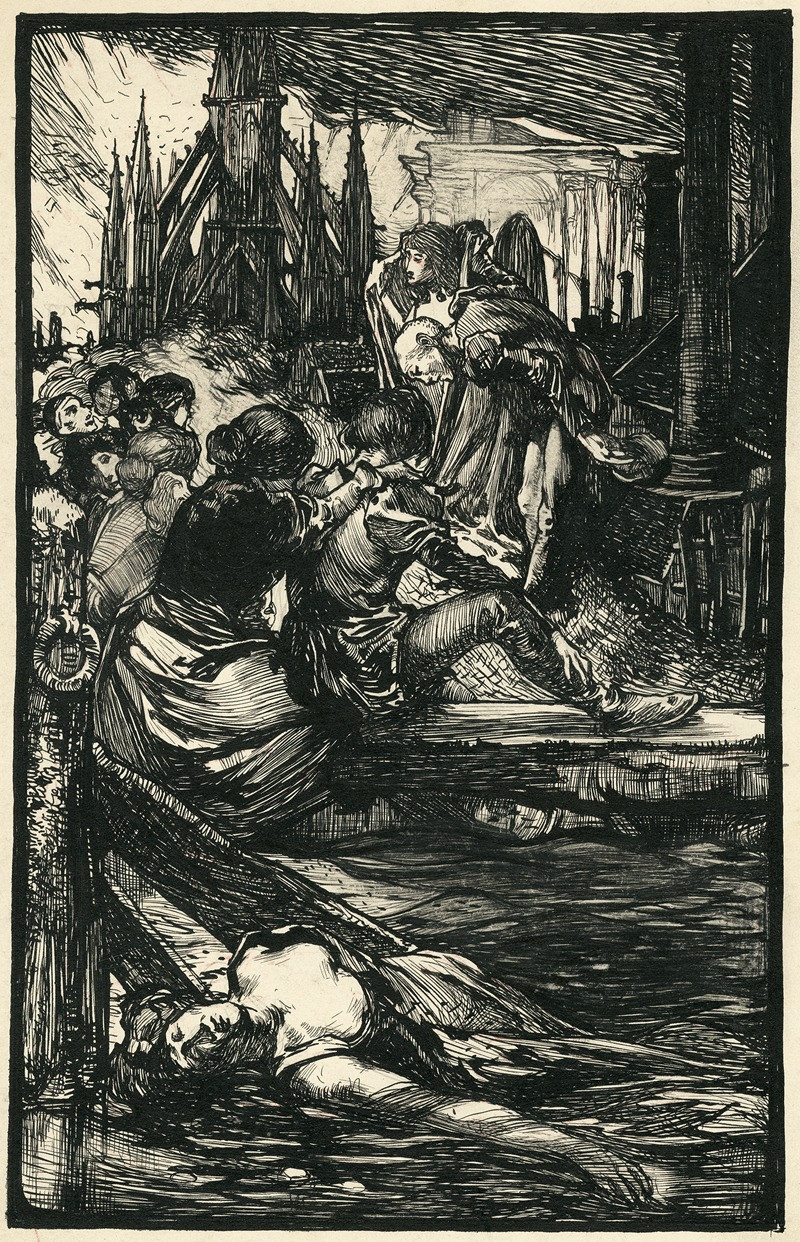Le Forum, la nuit (1842)
Technique: Giclée quality print
Recommended by our customers
More about this artwork
"Le Forum, la nuit," painted by Jean-Léon Gérôme in 1842, captures the haunting serenity and ancient majesty of a Roman forum under the cloak of night. Skillfully portrayed, it features a solitary Corinthian column soaring against a starlit sky, acting as a poignant testament to bygone glory. The scene is illuminated subtly, emphasizing the rich textures and architectural details of the surrounding ruins and buildings.Gérôme's use of light and shadow creates an atmosphere filled with mystery and nostalgia, drawing viewers into a contemplative journey through time. To the left, a cart with wooden wheels lies abandoned, its presence alongside the column adding a touch of the quotidien to the historical grandeur. The soft ambient glow hints at life persisting amidst the relics of the past, providing a striking contrast between the enduring and the ephemeral.This captivating depiction not only showcases Gérôme's precision and skill in rendering architectural forms but also his ability to evoke emotion and narrative through landscape.
Delivery
Returns
Jean-Léon Gérôme was a French painter and sculptor in the style now known as academicism. His paintings were so widely reproduced that he was "arguably the world's most famous living artist by 1880." The range of his oeuvre included historical painting, Greek mythology, Orientalism, portraits, and other subjects, bringing the academic painting tradition to an artistic climax. He is considered one of the most important painters from this academic period. He was also a teacher with a long list of students.

